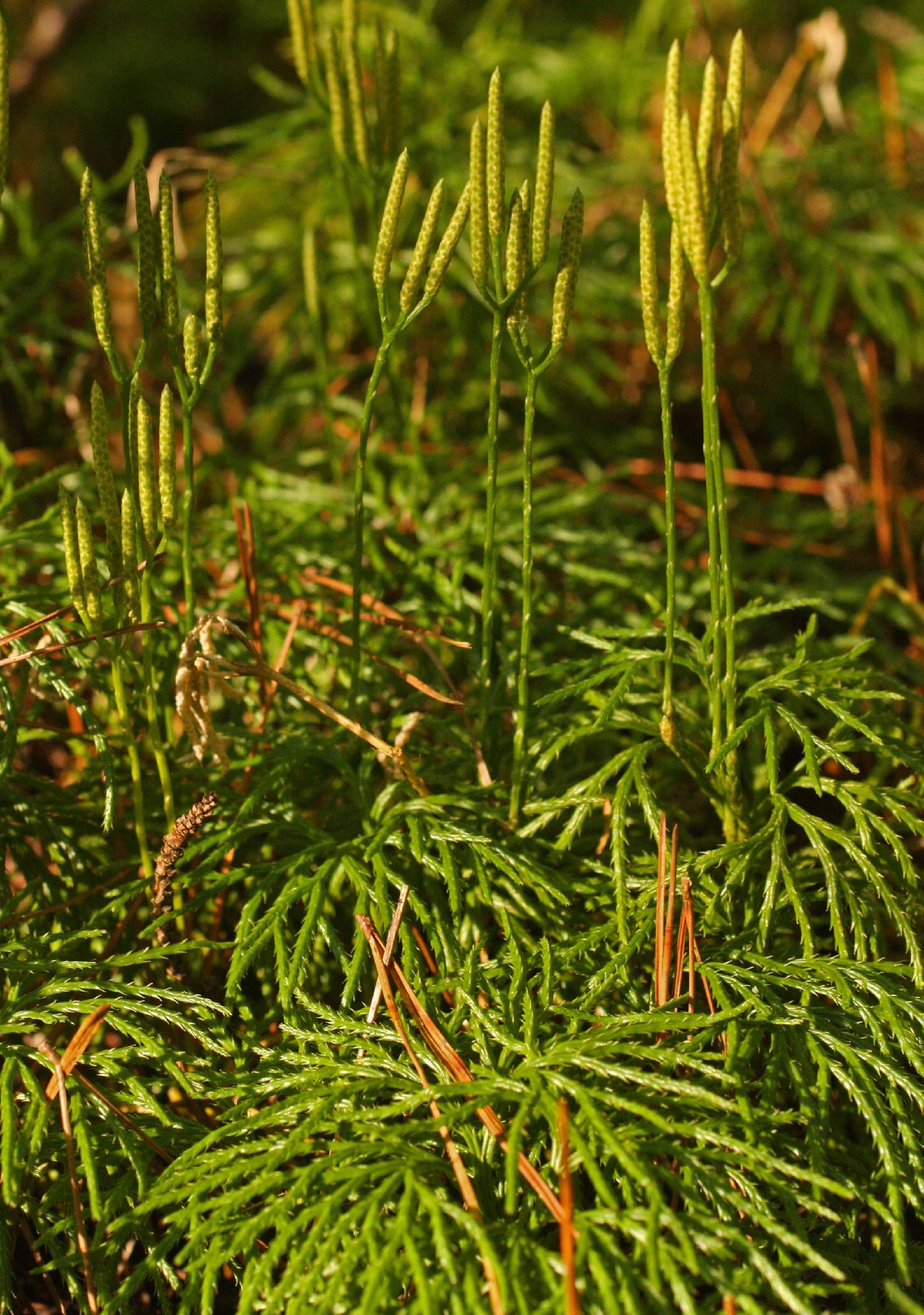
|
Family: Lycopodiaceae |
Plants terrestrial, mainly trailing on ground with erect shoots. Roots emerging immediately on underside of main stems. Horizontal stems on substrate surface to subterranean, long-creeping. Upright shoots quadrate to flattened (except in D . sitchense ), 2--6 mm diam., usually with 2--5 lateral branchlets on main erect stem; lateral branchlets leafy, ± flat in cross section. Leaves on horizontal stems somewhat distant, appressed, linear to lanceolate, thin, scalelike; leaves on ultimate branchlets appressed to divergent, linear-lanceolate to nearly filiform, usually almost scalelike and mostly imbricate, in 4 ranks, leaves of lateral ranks larger, more spreading than those of upperside and underside ranks (except in Diphasiastrum sitchense with 5 ranks of uniform nonimbricate leaves). Gemmiferous branchlets and gemmae absent. Strobili solitary and sessile or multiple and stalked, apex blunt, acute, or with sterile apical projection; peduncle conspicuously leafy; sporophylls shorter than peduncle leaves. Sporangia reniform. Spores reticulate, sides at equator convex, angles acute. Gametophytes nonphotosynthetic, mycorrhizal, carrot-shaped, paraphyses absent; ring meristem present. x = 23. Diphasiastrum is remarkable in North America for its ability to form numerous homoploid, apparently fertile interspecific hybrids, some of which are frequent to common and must be reckoned with in floristic studies. Field and laboratory studies of these hybrids and their parents are needed for determination of the population dynamics of Diphasiastrum and to answer questions as to why the parental species retain their genetic identities.
|
This project was made possible in part by the Institute of Museum and Library Services [MG-70-19-0057-19].
Powered by Symbiota



